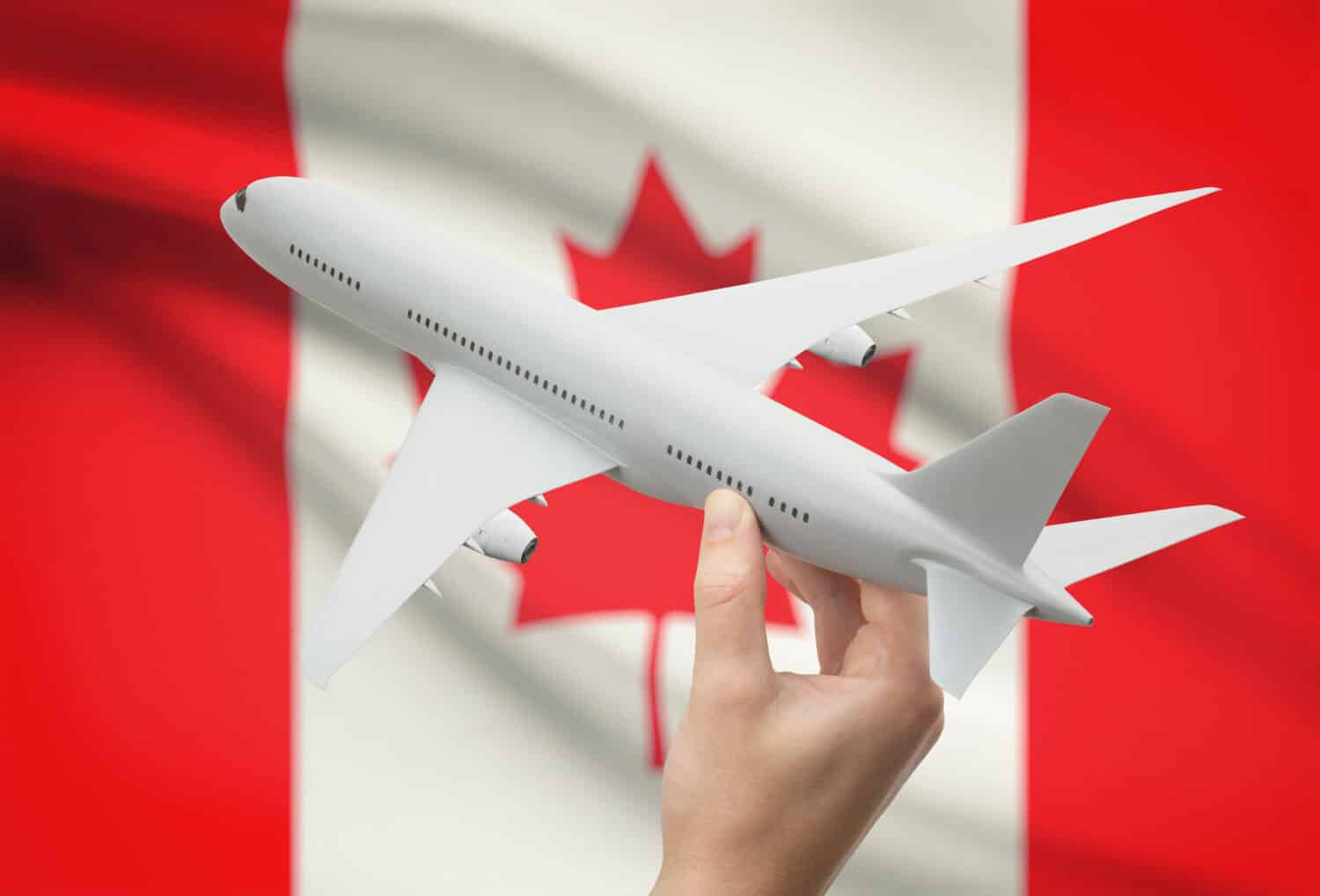A peak among human innovation in the twentieth century, air travel and airports have revolutionized how people see the world. For Canada, a country whose tourism industry brings in tens of billions of dollars in revenue a year, air travel is essential for economic growth.
Michael L. Moore, the founder of Countdown to Magic and an avid traveler through Canadian airports, spoke to A-Z Animals to revel in the different terminals he flew through as a child. “Airports are not just departure and arrival hubs but transitional spaces where different aspects of culture, technology, and even art intersect,” he shared.
Christen Thomas, a certified Travel Advisor with FORA and an expert in trip planning focused on history and culture, agreed with Moore. “Forget that it’s just a place to catch a plane. We’re talking about a location teeming with life — both modern and ancient.”
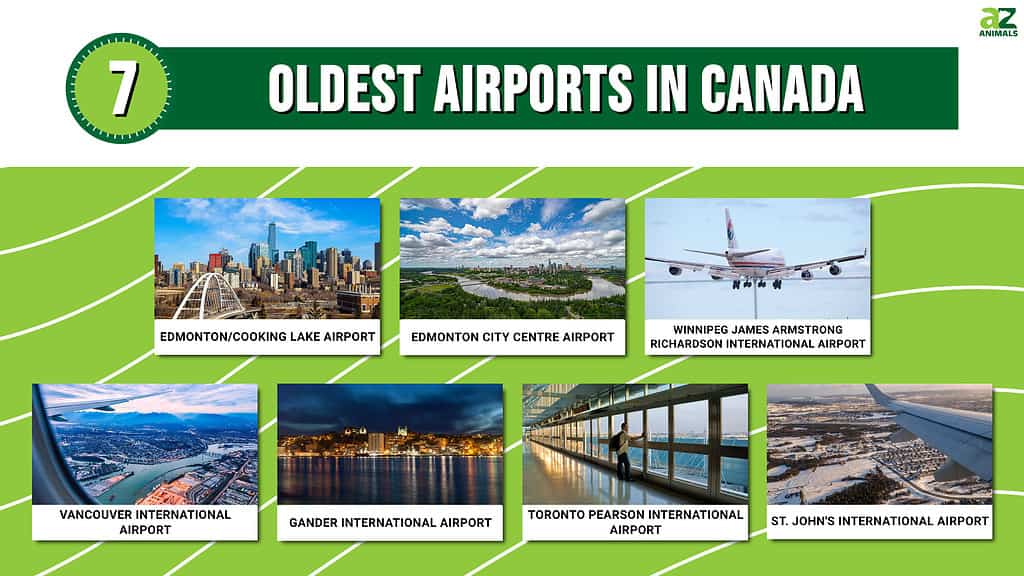
Flying to or from the Great White North? Consider flying through one of the oldest airports in Canada! Keep reading to discover how old each of the oldest airports in Canada is, and some fun facts about Canada’s aviation history.
Edmonton/Cooking Lake Airport (1922)

Cooking Lake Airport serves Strathcona County, about 30 minutes outside of Edmonton.
©iStock.com/ronniechua
As Canada’s oldest operating public airport, Edmonton/Cooking Lake Airport is — interestingly — operated and owned entirely by volunteers. More commonly referred to as simply “Cooking Lake Airport,” it’s one of only two public airports in Strathcona County.
While the airport itself wasn’t built until 1926, the first known flight to land on the airfield happened four years before in 1922. As part of the northern exploration, the flight in question returned to the region after an unsuccessful gold mine search. Only 10 years later, the airport received Alberta’s earliest-recorded instances of a medevac. It carried a pregnant wife and her husband from Fort McMurray to the Cooking Lake Airport, where they later consulted a doctor in Edmonton.
During World War II, the U.S. Army established a base at the airport to supply construction of the Canol pipeline — a high priority in light of Japan’s potential invasion. Throughout the later half of the twentieth century and into the 2000s, the airport experienced other firsts, like hosting the cast and crew of the film Wings of Chance, which was the first full-length Hollywood-directed film shot in Canada.
Today, Cooking Lake Airport generates nearly 10 million dollars of economic value to its region.
Edmonton City Centre Airport (1926)

Alberta’s Edmonton relied on the Edmonton City Centre Airport until 2009.
©TetyanaT/Shutterstock.com
While it might not be the oldest airport in Canada, Edmonton City Centre Airport claims the title of the first licensed airfield in the country. Licensed in 1926, the airport’s original name was “Blatchford Field” after a former mayor.
Edmonton City Centre Airport played a significant role in Canada’s aviation history. Thanks to two fighter ace pilots — Wop May from World War I and Howard Blatchford from World War II — the airport became known as the Gateway to the North in the early half of the twentieth century. During World War II, the airport played a significant role as a stop-over and was the home of two different British Air Training schools.
Unfortunately, as the 1950s dawned on the horizon, so did the end of Edmonton City Centre Airport. Hotly debated for over 50 years, officials on both sides of the issue argued about the airport’s obsolescence amid new military bases and international airports. Finally, in 2009, the city council came to an agreement for a phased closure of the airport.
While it is currently closed — and has been since 2013 — the City of Edmonton is redeveloping the land to become a planned community.
Winnipeg James Armstrong Richardson International Airport (1928)
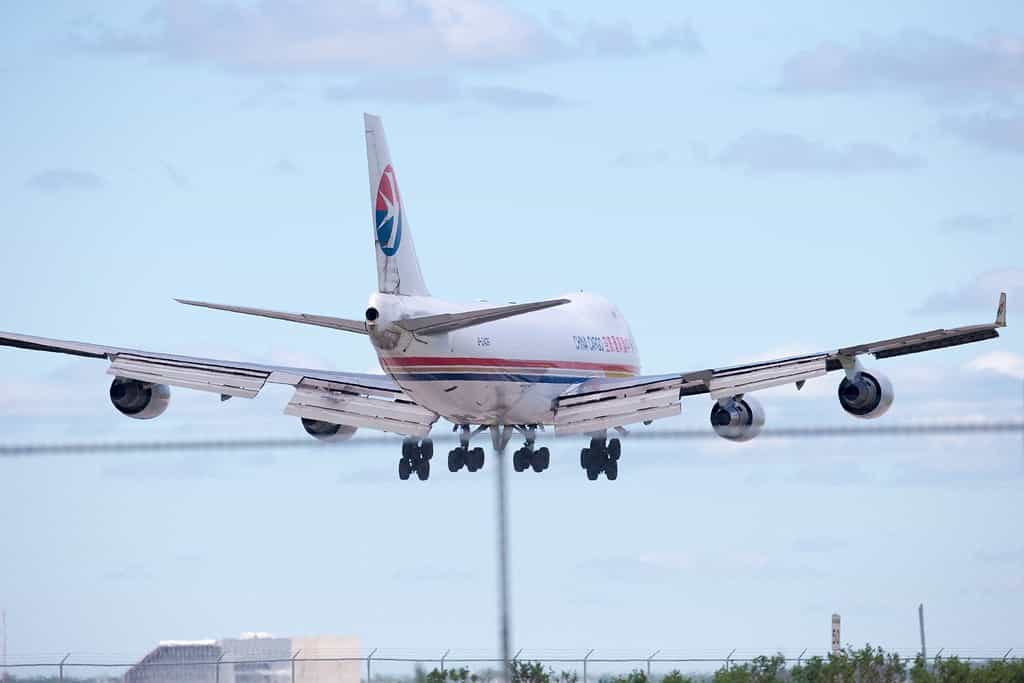
The Winnipeg Richardson International Airport.
©Welshboy2020/Shutterstock.com
Two years after Edmonton City Centre Airport got its license, the Winnipeg James Armstrong Richardson International Airport opened as the “Stevenson Aerodome.” As of 1931, it became the country’s first international airport with a flight between Winnipeg and North Dakota. Just five years later in 1936, the City of Winnipeg decided to designate the Aerodome as a municipal airport.
After its designation as a municipal airport and its service in World War II, the airport quickly gained a strong foothold in Canadian aviation. While named the Winnipeg International Airport for some time, the 2006 Minister of Transport announced the name would change to Winnipeg James Armstrong Richardson International Airport in honor of James Armstrong Richardson, an influential Canadian commercial aviation pioneer from Winnipeg.
Today, the airport has two terminals: a main terminal, designed to capture the city’s distinctive landscape, and a terminal for Perimeter Aviation. The Perimeter Terminal, located nearly two miles south of the main terminal, exclusively uses its own building to handle passenger, cargo, and chartered flight services.
The airport supports 13 different passenger airlines, all of which operate scheduled flights across Canada and the United States. Some even operate seasonal charters to leisure destinations like Cancun, London, and Huatulco (in Oaxaca).
Vancouver International Airport (1931)
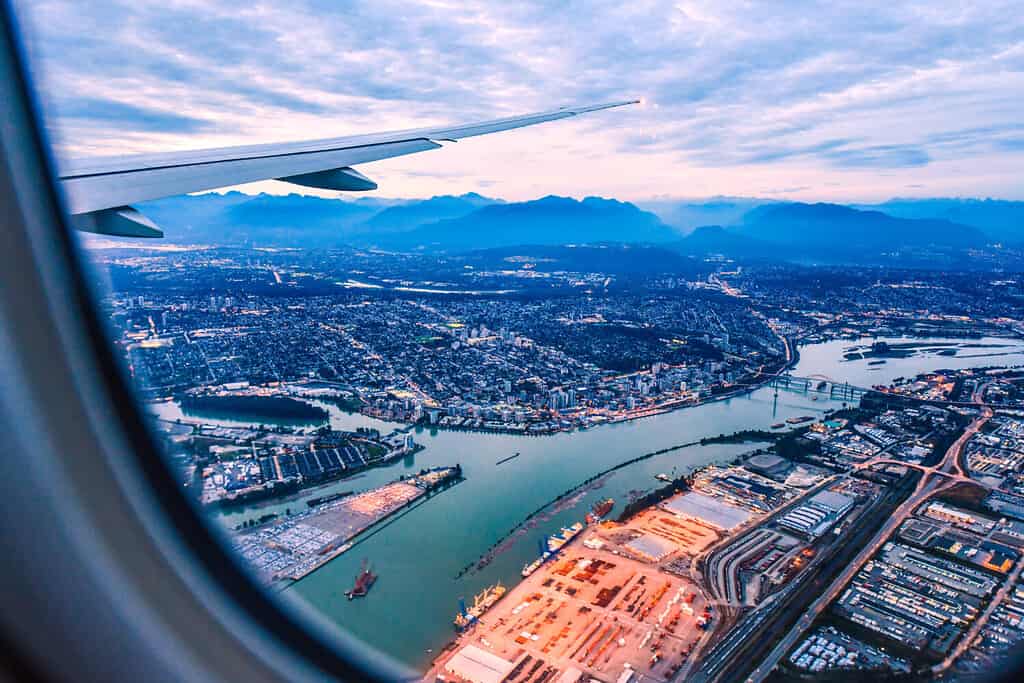
Vancouver International Airport won titles like the Best North American Airport and the Top 10 Airports in the World.
©i viewfinder/Shutterstock.com
Behind Toronto Pearson, Vancouver International Airport is the second-busiest airport in Canada. It functions as a hub for both Air Canada and WestJet. As a trans-Pacific hub, the airport also handles more direct flights to China than any other airport in North America and Europe. It’s an award-winning airport with titles like “Best North American Airport” and the “Top 10 Airports in the World.” Like its big sibling Toronto Pearson, over 50 different airlines have scheduled and chartered flights running through the airport’s terminals.
When the City of Vancouver purchased land on Sea Island in 1929, it was meant to replace the grass airstrip that stood on Lulu Island at the time. Three years later, the Vancouver Airport opened. However, most of its use in the ensuing years was dedicated to World War II efforts. Canada’s Department of National Defence and the Department of Transport leased the original (which is today’s South Terminal) to the federal government for use in air training schools.
Today, Vancouver International Airport’s spacious terminals include everything passengers could want — from shops to restaurants to history. Thomas felt passionately about Vancouver’s dedication to preserving the past and shared her thoughts on how it marries the old with the new.
Native Art at Vancouver International Airport
“The airport offers a first-rate exhibition of Northwest Coast Native art, making it far more than a pit stop between flights,” she started. “This isn’t a gallery where you’re a passive observer; you’re a participant in an ongoing dialogue about Indigenous heritage.
“Concerning the deeper layers that make a place like this thrive, my perspective is about scratching beneath the surface, finding the soul of a place,” she continued. “This isn’t about wallpaper art to keep travelers entertained while they wait. The art at Vancouver International Airport is a language—conversational, storied, challenging in the way it might disrupt your notions about Indigenous cultures.”
Gander International Airport (1938)
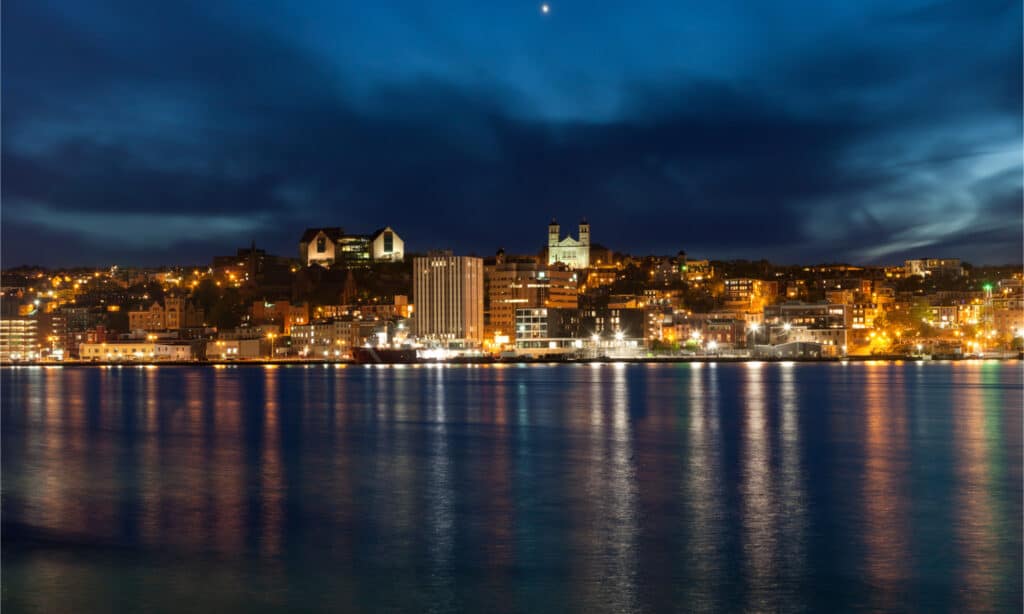
In the twentieth century, the Gander Airport became the largest airport in the world for a few years.
©Henryk Sadura/Shutterstock.com
Referred to by some in Canadian aviation circles as the “Crossroads of the World,” Gander International Airport opened in 1938 after two years of construction. At the time, it grew quickly after just four years of operation. By 1940, it was the largest airport on the globe.
During the Second World War, the Royal Canadian Air Force used the airfield at the then-named Newfoundland Airport extensively. It became a hotspot for staging anti-submarine patrols, a changeover spot, and a radio station. When Newfoundland became part of Canada in 1949, the airport was renamed Gander Airport.
Also significant: Gander’s involvement in relief efforts during the 9/11 terrorist attacks. The airport even inspired a musical, Come From Away, that details how 38 planes with 7,000 passengers aboard had to land unexpectedly at Gander International Airport. Not only did the airport handle the passengers with the potentially-global security threat; the people of Gander began to frantically prepare food, shelter, and other methods of hospitality to make the displaced travelers feel at home during the uncertain time.
With such a storied history, it’s impressive that much of Gander’s main terminal remains the same today. Built in the 1950s, the main terminal sits much like it did then, with many of the same fixtures. The international lounge got an update in 2022, and officials have carved out the funds for more refurbishments.
Gander International Airport’s Impact
Shelley Marmor, a travel expert, personally visited Gander International Airport and felt the history as she walked through the terminal. “I had the opportunity to visit Gander, and it was akin to a historical immersion. Interestingly, the International Departures Lounge was inaugurated by Queen Elizabeth II, adding a touch of regal elegance to its already rich history. Beyond its royal connections, Gander is widely recognized as the Crossroads of the World due to its pivotal role during global events. Its geographical positioning rendered it a crucial refueling and maintenance depot, especially during wartime operations.”
According to a press release from the airport, Gander’s economic contribution includes 1,200+ full-time jobs and over $240 million in economic impact.
Toronto Pearson International Airport (1939)
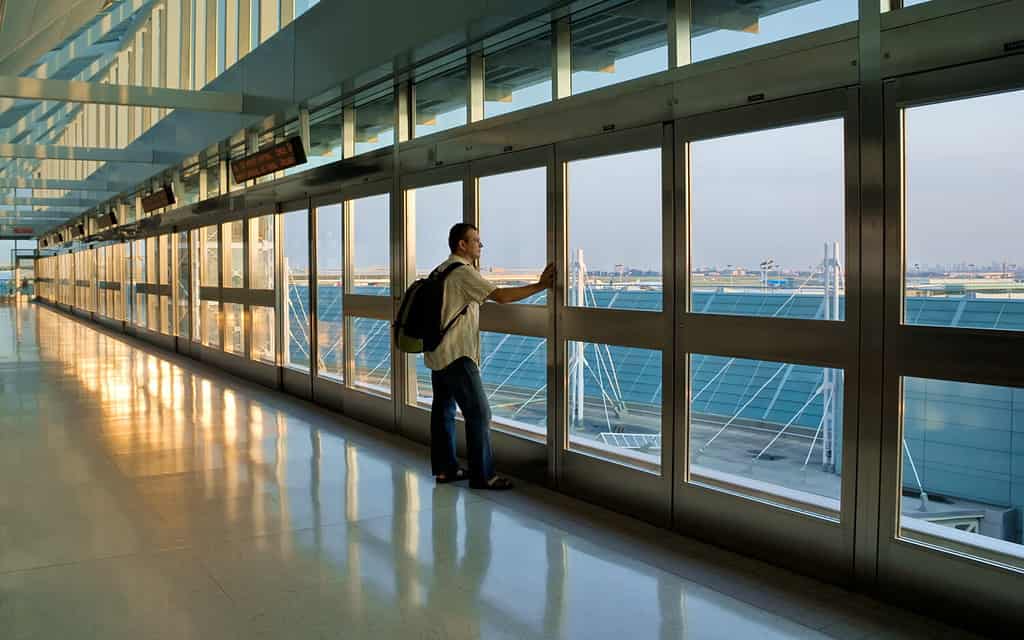
Toronto Pearson International Airport ranks as the busiest airport in Canada.
©Helen Filatova/Shutterstock.com
For Moore, Toronto Pearson has a special place in his heart. “One of my earliest memories is of stepping off a plane at Toronto Pearson International Airport as a kid! Pearson’s been around since 1939 and is, without a doubt, Canada’s busiest hub,” said Moore.
He’s right: today, Toronto Pearson is the 30th busiest airport in the world, the second-busiest international airport in the Americas, and the busiest airport in Canada. During 2019 alone it handled over 50 million passengers. Airlines including Air Canada and WestJet use the airport as their hubs of service. The airport operates two public terminals that handle 50+ passenger airlines and a VIP terminal for private charters.
Originally called the Malton Airport when it was built in 1939, the Toronto Pearson International Airport was one of two outlined airports the Government of Canada commissioned for the Toronto area. During World War II, it housed flight schools for the Royal Canadian and British air forces. After the war, the municipality that owned the airport sold it to the Canadian government, who in turn renamed it the Lester B. Pearson International Airport in honor of the 14th Prime Minister.
St. John’s International Airport (1941)
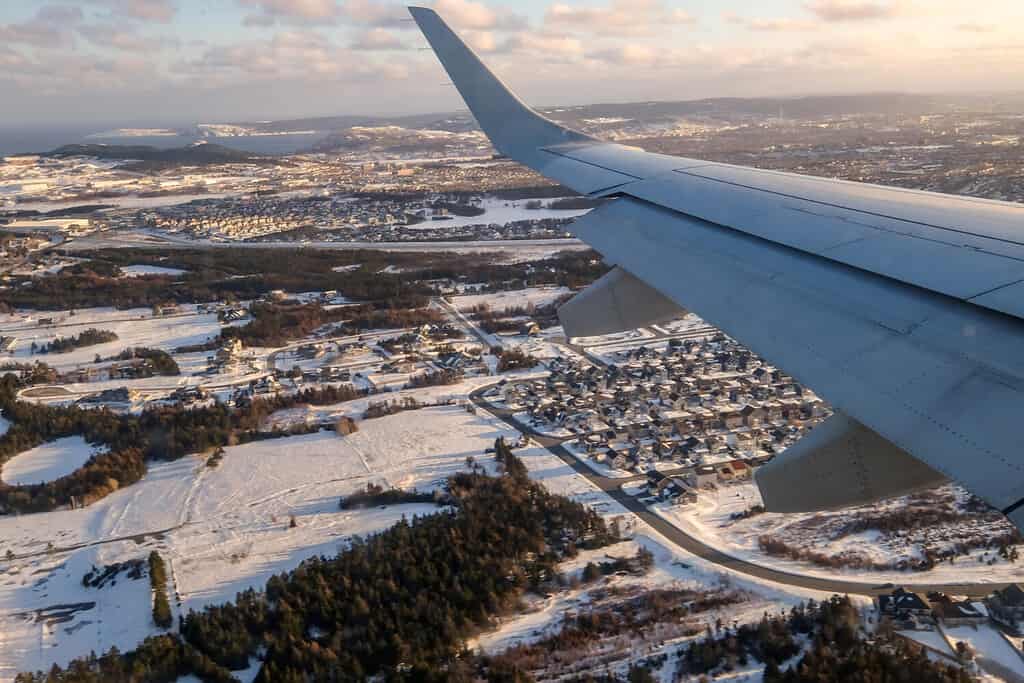
In Newfoundland, St. John’s International Airport is a small but mighty terminal that welcomes travelers to North America.
©Dolores M. Harvey/Shutterstock.com
“St. John’s International Airport is one of the oldest,” said Moore. “While it’s tiny compared to giants like Pearson or Vancouver, its geographical position makes it the first point of contact for many flights crossing the Atlantic. It’s not just an airport; it’s a welcome mat for North America, making those long-haul flights more bearable.”
Like many other airports, airstrips, and airfields in Canada, St. John’s International Airport in Newfoundland and Labrador finds its origin in the flurry of activity leading up to World War II. Canadian Parliament made moves to protect the Dominion of Newfoundland from Germany in 1939, resulting in the debate for and creation of an air base near St. Johns. Once built, it served as a base for the Royal Canadian Air Force, England’s Royal Air Force, and the United States Army Air Corps.
Decades later, in 2002, officials gathered $50 million to perform a complete overhaul of the rundown terminal and airport. The update expanded the airport — even making it one of only five Canadian airports to be an acceptable emergency landing site for Space Shuttle orbiters.
Summary of the 7 Oldest Airports in Canada
| Rank | Airport | Established |
|---|---|---|
| 1 | Edmonton/Cooking Lake Airport | 1922 |
| 2 | Edmonton City Centre Airport | 1926 |
| 3 | Winnipeg James Armstrong Richardson International Airport | 1928 |
| 4 | Vancouver International Airport | 1931 |
| 5 | Gander International Airport | 1938 |
| 6 | Toronto Pearson International Airport | 1939 |
| 7 | St. John’s International Airport | 1941 |
Canada’s Aviation History
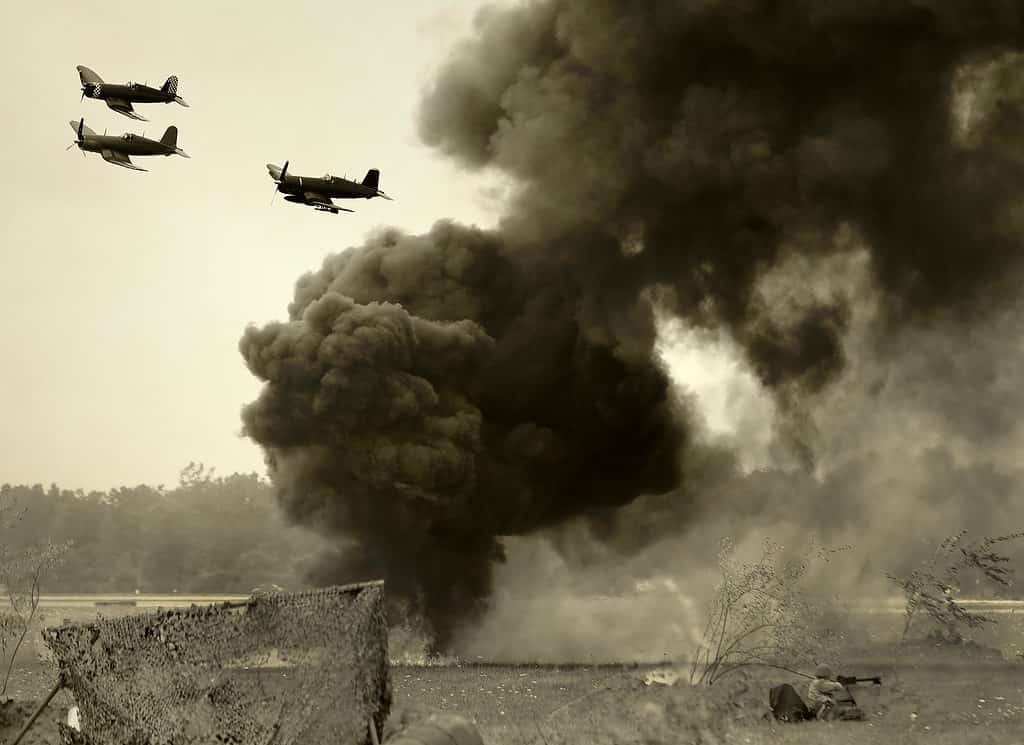
Air travel played a large part in World Wars I and II.
©iStock.com/icholakov
The advent of flight in Canada came over 20 years before the Wright Brothers with the first manned flight in a balloon in 1840. After the flight, national ambitions, politics, and technology spurred Canada to join the aviation industry in earnest.
In 1909, several years following the Wright Brothers’ groundbreaking flight, Canadians experimented with test flights of Alexander Graham Bell’s Silver Dart. Only five years later, aircraft began to have a place in war. During the first world war, Canadians joined the British Royal Flying Corps and the Royal Canadian Air Force to aid in the Allies efforts. Because Canada remained a British Dominion in 1914, England’s entrance to the war automatically brought Canada with it — which is why some Canadians joined the British Flying Corps rather than Canada’s Air Force.
After World War I ended, flight became instrumental in exploring the northernmost territories of Canada. Thanks to donations from both England and the United States, Canada now had a plethora of aircraft to explore, photograph, and use in emergency situations. During northern exploration, commercial aviation grew in popularity. Small and regional airlines established themselves to ferry residents to and from different destinations across the sprawling country.
Midway through World War II, the Jet Age took charge of worldwide travel. Quickly making railroads obsolete, air travel became the norm and set the stage for a rise in airline competition.
Today, the scheduled air transportation industry alone accounts for $26.6 billion dollars in revenue for Canada. While the COVID-19 pandemic affected travel and tourism, especially for air travel, Deloitte expects Canada’s aviation industry to continue growing into 2019 with a 30-year growth rate of 2.9%.
Next Stop: History
Airports hold a special place in history; they signify human innovation and play a major role in the formation of both political events and economies.
Before you board your flight in Canada, take a moment to delve into the history of aviation. Cooking Lake, Edmonton City Centre, and Winnipeg James Armstrong Richardson’s airports are among the oldest in the country — and offer a rare look into the past while you jet off to a bright future.
Thank you for reading! Have some feedback for us? Contact the AZ Animals editorial team.

